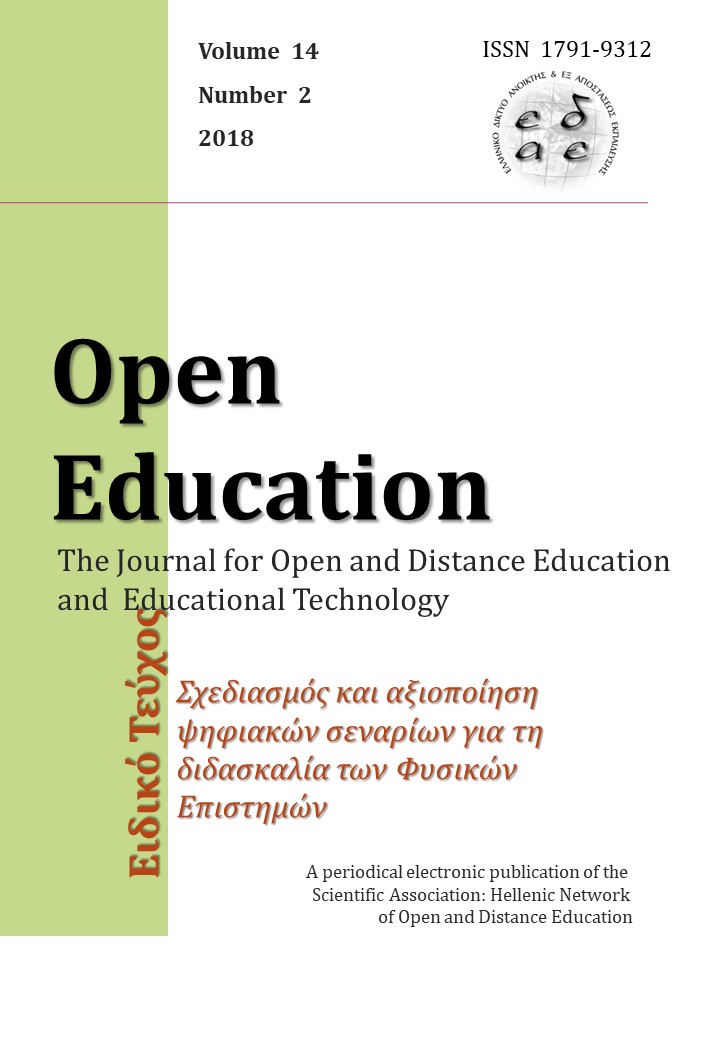Three exemplary electronic scenarios for the lower secondary education Physics in the "Aesop" depository

Abstract
lifeguard’s problem). Lab experiment is combined with virtual experiments and digital tools are used. Students are asked to work collaboratively, using worksheets. The second scenario (The electric short circuit - Dangers and "Safety") focuses on understanding electrical short circuit, prediction, risks and deterrence, and acquiring the relevant knowledge that is considered necessary for the students, both for the needs of their studies and for everyday life. During the activities, students are sometimes asked to work individually and sometimes collaboratively. A digital multiple choice questionnaire to highlight pre-existing knowledge and perceptions, a real experiment and a virtual experiment are proposed. Teaching is based on inquiry based and constructive learning. Worksheets are also used. The third scenario (Electric circuit, resistance, voltage and intensity) is the most difficult and complicated one. As the students’ practice on real electrical circuits (for the negotiation of concepts such as resistance, voltage and intensity, laws such as Ohm’s and rules such as Kirchhoff’s) and the use of measuring instruments (such as voltmeter and ammeter) in the laboratory is usually limited due to lack of time amd/or equipment, measurement difficulties etc., the virtual electrical circuit lab can - in addition to the real lab - support this exercise and teaching, in general. The scenario proposes a real workshop at school and a virtual lab as an extension, as homework. Teaching is based on inquiry based and constructive learning, with peer instruction elements. Students work collaboratively, using worksheets. The first worksheet is used for the detection of the students’ misconceptions (according to students' mental models for the electric circuit). The second worksheet is about the virtual lab’s activities. In addition, web 2.0 tools and optional blended learning elements are proposed to be used. The collection of the AESOP is - for the educator interested - a significant digital repository of qualitive scenarios that may - if necessary - be selected, adapted and applied to the classroom. In addition, it offers the choice and utilization of digital tools, media and learning objects that are now available in relatively sufficient quantity and quality. Especially for the subject of Physics, digital didactic scenarios help to complement and extend the real lab with the virtual one, as well as their interconnection. The three scenarios described in this article have had the above objectives and, three years after their publication continue to offer digital sources and ideas to the educators interested, still being as up-to-date and as helpful as when they were created. We believe that the AESOP could be improved in the future by: enrichment with more scenarios, external evaluation, use within teachers’ training programs and its inclusion in official teaching guides by the ministry of Education.
Article Details
- How to Cite
-
Κολτσάκης Ε. (2018). Three exemplary electronic scenarios for the lower secondary education Physics in the "Aesop" depository. Open Education: The Journal for Open and Distance Education and Educational Technology, 14(2), 108–123. https://doi.org/10.12681/jode.19009
- Issue
- Vol. 14 No. 2 (2018)
- Section
- Section 1
Copyright Notice
Authors who publish with this journal agree to the following terms:
Authors retain copyright and grant the journal right of first publication with the work simultaneously licensed under a Creative Commons Attribution Non-Commercial License that allows others to share the work with an acknowledgement of the work's authorship and initial publication in this journal.
Authors are able to enter into separate, additional contractual arrangements for the non-exclusive distribution of the journal's published version of the work (e.g. post it to an institutional repository or publish it in a book), with an acknowledgement of its initial publication in this journal.
Authors are permitted and encouraged to post their work online (preferably in institutional repositories or on their website) prior to and during the submission process, as it can lead to productive exchanges, as well as earlier and greater citation of published work.


